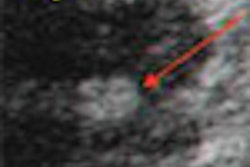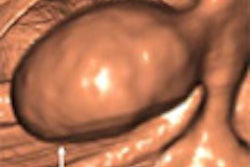AGRA - Both CT and MR play key roles in the imaging of focal liver disease. But MR has an edge over CT in both liver lesion detection and characterisation due to superior contrast resolution, according to a presentation at the 58th annual congress of the Indian Radiological and Imaging Association (IRIA).
In his presentation, Dr Kartik S. Jhaveri, staff radiologist and assistant professor at University Health Network in Toronto, discussed the appearance of focal liver lesions on CT and MR, and the relative merits of each modality.
The most common benign liver tumour, hemangioma, shows a well-defined low-density nodule on CT, with nodular peripheral enhancement on early phase, Jhaveri said. MR is more specific and can differentiate hemangioma from metastasis because the high signal on T2 remains unchanged on long TE.
For metastasis, however, CT is the most sensitive method for detecting the subtle calcification that occurs within mucin-secreting metastases of gastrointestinal-tract origin, Jhaveri stated. On CT, the majority of the metastases are of low attenuation on unenhanced images, and do not show any change in the portal phase.
"Hypervascular tumours are often visible as low-attenuation lesions on unenhanced images and enhance transiently in the arterial phase, some becoming invisible in the portal phase," he said.
In biliary hamartomas, however, multiple small soft-tissue density lesions on CT can mimic metastases or microabscesses. "MR clarifies -- multiple 1- to 15-mm high signals on T2 may show ring enhancement on gadolinium injection," Jhaveri said.
In focal nodular hypoplasia, in which the vascular lesions are made of hepatocytes, bile ducts, and other liver elements, about 50% of lesions show a central stellate fibrovascular scar on imaging. On MRI the central scar is typically hypointense on T1 weighting and hyperintense on T2 weighting, and may be visible on MRI when not visualised at CT, he said.
"Following gadolinium enhancement, the features on T1-weighted images are the same as for CT. The use of iron-oxide agents taken up the Kupffer cells may help to improve specificity on MRI," he said. Focal nodular hypoplasia is thought to be caused by congenital vascular malformation, and enlarge because of hormone stimulation.
Benign cystic lesions, such as hydatid cysts, appear as well-defined hypoattenuating lesions with a distinguishable wall on CT. In 50% of cases, wall calcifications are present, and daughter cysts are identified in 75% of cases. MR imaging best demonstrates the pericyst, matrix, and daughter cysts, Jhaveri said.
Finally, for hepatocellular carcinoma (HCC), he advised using biphasic CT to detect small carcinomas. "On CT, small HCC shows arterial phase enhancement and portal phase hypoattenuation," he said.
By N. Shivapriya
AuntMinnieIndia.com staff writer
January 25, 2005
Copyright © 2005 AuntMinnie.com



















